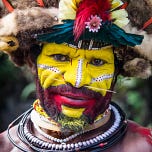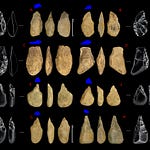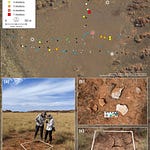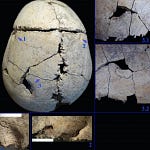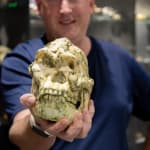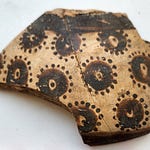High in the mountains and across the scattered islands of Papua New Guinea lives a population whose DNA tells a story about the earliest dispersals of Homo sapiens. For decades, scientists debated whether these communities were descendants of a separate migration out of Africa or part of the same wave that gave rise to other non-African peoples. A new study in Nature Communications1 points toward an answer, and it is as intricate as the landscape itself.
“Perhaps adaptations to tropical climates make Papuans look more like Sub-Saharan African groups, even though their genetics clearly link them to other Asian populations,” said Mayukh Mondal, who led the research. “More studies are needed to uncover how evolution shaped this remarkable population.”
A puzzle stretching back 60,000 years
Modern humans left Africa between 50,000 and 70,000 years ago. Archaeological finds in Sahul (the ancient landmass joining Papua New Guinea and Australia) show human presence by at least 50,000 years ago, older than many sites in Europe. For decades, this led to the idea of a “first out of Africa” migration — a separate coastal trek that seeded Oceania before the later expansion into Eurasia.
But mitochondrial and Y-chromosome studies failed to confirm a distinct ancestry. While traces of earlier dispersals cannot be ruled out entirely, genomic studies increasingly point to a single main migration for all non-African populations.
Papua New Guineans complicate this picture. They carry the highest levels of Denisovan DNA in the world — remnants of encounters with a now-extinct hominin whose remains are known mainly from a Siberian cave. This inheritance hints at stopovers in Southeast Asia where Homo sapiens and Denisovans may have met.
Using AI to model ancient population history
The new study combined high-quality genome data with neural-network models to test demographic scenarios explaining the origins of Papua New Guineans. The results point to a sister relationship with other Asian populations rather than a separate, older migration.
The authors also identified a severe population bottleneck in the ancestors of Papua New Guineans. Numbers may have plunged soon after arrival and remained low for millennia. Unlike other non-African populations, they never experienced the farming-driven demographic booms that transformed Eurasia.
“This unique demographic history left genetic signatures that, if misunderstood, could look like evidence of a contribution from an unknown population,” Mondal explained.
Why it matters for anthropology and human evolution
These findings deepen the story of how Homo sapiens expanded and adapted. Papua New Guinea represents a living repository of the earliest human movement into Oceania and the persistence of small-scale societies over tens of millennia. Isolation and survival bottlenecks have preserved signatures of one of humanity’s oldest population histories.
This work also underscores how demographic change — not just gene flow or selection — can shape the patterns we see in human DNA. It challenges scientists to disentangle the effects of ancient migrations from the echoes of small, isolated populations.
Related research
Malaspinas, A.-S., et al. (2016). “A genomic history of Aboriginal Australia.” Nature, 538(7624), 207–214. https://doi.org/10.1038/nature18299
Bergström, A., et al. (2021). “Origins of modern human ancestry.” Nature, 590(7845), 229–237. https://doi.org/10.1038/s41586-021-03244-5
Jacobs, G. S., et al. (2019). “Multiple deeply divergent Denisovan ancestries in Papuans.” Cell, 177(4), 1010–1021.e32. https://doi.org/10.1016/j.cell.2019.02.035
These studies show Papuan and Aboriginal Australian genomes as key evidence for the earliest dispersals of modern humans and the mosaic of archaic admixture events that followed.
Mondal, M., André, M., Pathak, A. K., Brucato, N., Ricaut, F.-X., Metspalu, M., & Eriksson, A. (2025). Resolving out of Africa event for Papua New Guinean population using neural network. Nature Communications, 16(1), 6345. https://doi.org/10.1038/s41467-025-61661-w

